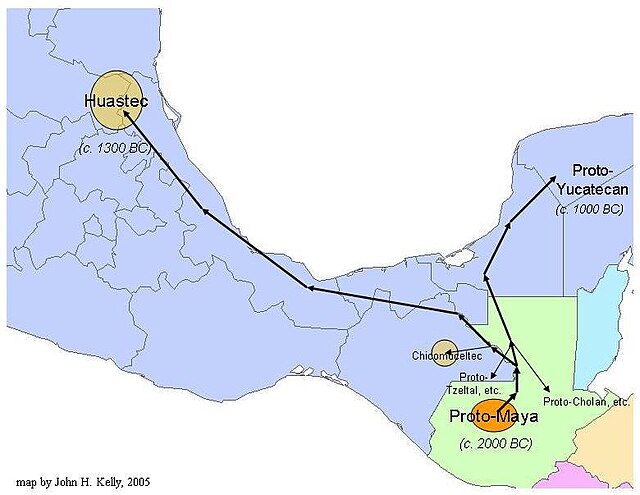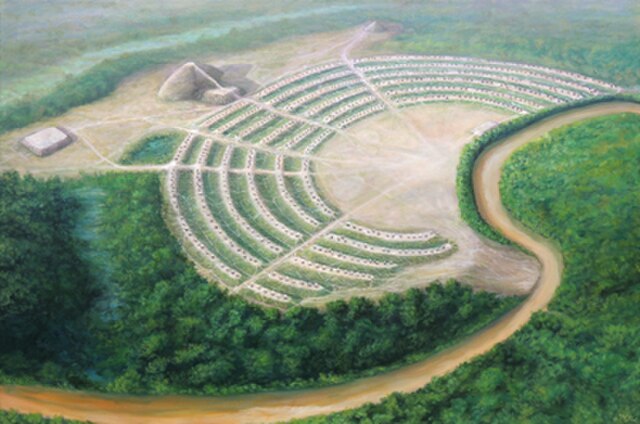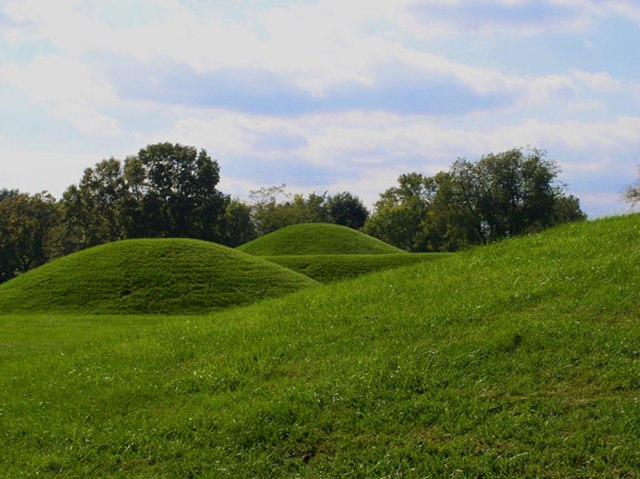The Huastec civilization was a pre-Columbian civilization of Mesoamerica, occupying a territory on the Gulf coast of Mexico that included the northern portion of Veracruz state, and neighbouring regions of the states of Hidalgo, Querétaro, San Luis Potosí, and Tamaulipas. The Huastec people were an early offshoot of the Maya peoples that migrated northwards.
Late Postclassic Huastec temple at Castillo de Teayo
Classic period sculpture in the Museum of Anthropology in Xalapa, Veracruz
Early Postclassic life-death figure at the Brooklyn Museum
Approximate routes and dates of the proto-Huastec and other Maya-speaking groups
In the history of the Americas, the pre-Columbian era, also known as the pre-contact era, spans from the original peopling of the Americas in the Upper Paleolithic to European colonization, which began with Christopher Columbus's voyage of 1492. Usually, the era covers the history of Indigenous cultures until significant influence by Europeans. This may have occurred decades or even centuries after Columbus for certain cultures.
Artist's reconstruction of Poverty Point, 1500 BCE
Hopewell mounds from the Mound City group in Ohio
Monks Mound of Cahokia (UNESCO World Heritage Site) in summer. The concrete staircase follows the approximate course of the ancient wooden stairs.
An artistic recreation of The Kincaid site from the prehistoric Mississippian culture as it may have looked at its peak 1050–1400 CE








